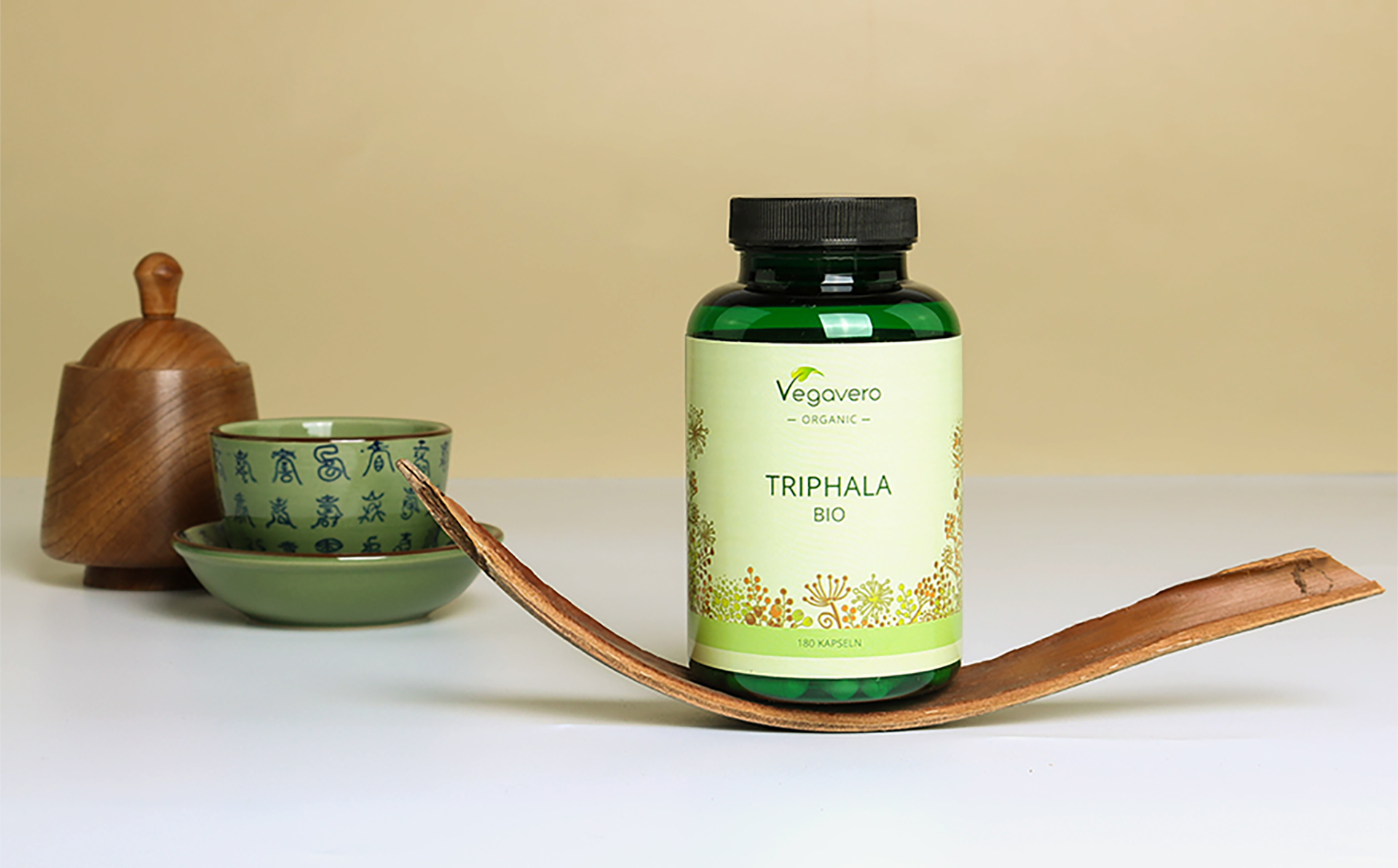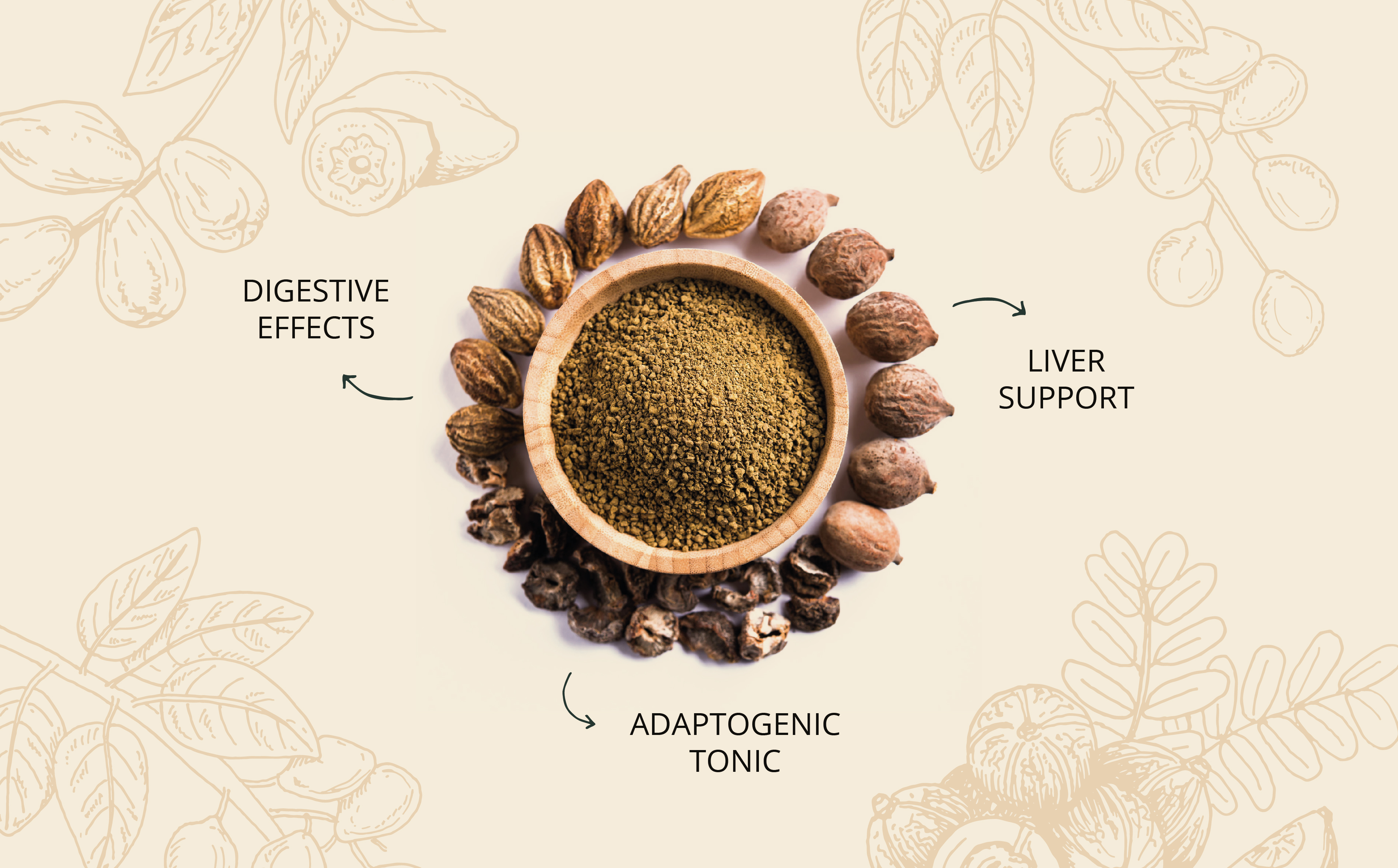
According to this motto, the ancient Vedic healers of Ayurveda probably brooded over the three power fruits of Triphala and united them. Most people will probably think of a fairy tale that centers around three wishes or three tasks. Thus, the number 3 has always had a special place in many cultures and religions and is considered a sign of something whole and perfect - something to which nothing more needs to be added. In Ayurveda, the three stands for balance and finds a central meaning in the theory of Tridosha. In our blog about Ayurveda we have already discussed the meaning of these doshas, the three fundamental ayurvedic energy forms.
Three berries for a long life
The name Triphala comes from Sanskrit and translates to "three fruits" (tri = three / phala = fruit). It specifically refers to the three berries Bibhitaki, Amalaki and Haritaki. These adventurous-sounding berries come from trees of the myrobalan family, which had already been used medicinally in ancient times and are still valued today for their high content of bioactive substances.
Together, the Triphala berries make a true power-blend: Bibhitaki stands for "what keeps disease away from you". The Amalaki berry comes from the Amla tree, which is considered sacred in Hindu religion. The berry is said to bring "eternal youth and beauty". Lastly, the fruit of the Haritaki tree is referred to as "Queen of Natural Remedies" and is described by Charaka (Indian doctor and author of Charaka Samhita - core of the traditional literature of Ayurveda [1]) "as healing and nourishing as mother's milk".
These traditional descriptions already suggest that each berry alone has special properties. However, when mixed together, the result is one of the most potent and popular Rasayanas in Ayurvedic medicine. Rasayana is a Sanskrit term and means something like "rejuvenate" or "renew". This does not imply the classical promise of anti-aging (neither does it remove all wrinkles nor does it make you look 20 years younger). It rather suggests the prevention of diseases before they occur and keeping body and mind healthy for a lifetime. This is the central principle of Ayurveda. [2]

A jack of all trades - not only in Ayurveda
Ayurvedic medicine often uses Triphala as a central pillar for therapies that mainly targets the stomach and intestine. However, due to the complexity of the three power berries, Triphala is suitable for a wide variety of applications. And this is exactly where Ayurveda and Western medicine meet. The interest of modern science is shown by the large number of studies that examined the effects of the three individual berries, as well as their combination. The knowledge that has been acquired and passed on in Ayurveda over thousands of years has in part been impressively confirmed through scientific research. The positive effect on the gastrointestinal tract, for example, has been associated with the strong antioxidant properties and high content of flavonoids. [4] The same applies to the anti-inflammatory properties, strengthening of the immune system and the anti-aging effect of Triphala. [5,6] The positive effect on the human intestinal flora is another interesting aspect worth mentioning. Certain substances found in Triphala (namely quercetin, gallic acid and polyphenols) promote the growth of probiotic intestinal bacteria and significantly inhibit the growth of unwanted germs such as E.Coli. [7]
The multitude of health-promoting properties of the three power fruits is only slowly being unraveled and understood by science. Many mechanisms are still too complex to be described with certainty.
Strong rhythm and routine
A great feature of Triphala is that it is suitable and recommended for almost everyone - regardless of age, sex, constitution or Dosha manifestation. Thus, it can be safely taken for a lifetime and be easily incorporated into the daily routine. In ayurvedic practice, taking Triphala is considered especially beneficial in the evening, as the body carries out detoxifying and regenerating processes especially during the night.
There are various Triphala products available, for example in the form of powder or tea. Relatively new (but very practical) are tablets or capsules. It is always important to make sure that the Triphala is free of additives and as natural and gently processed as possible - ideally in organic quality – so that the valuable bioactive compounds remain intact.
Sources
[1] Sena S.: Ayurveda–Lehrbuch; Kompendium des Ayurveda-Klassikers Charaka-Samhita. Vasati Verlag (2005)
[2] Bhishagratna K., An English Translation of the Sushruta Samhita, Based on Original Sanskrit Text, with a Full and Comprehensive Introd., Varanasi, India: Chowkhamba Sanskrit Series Office (1963)
[3] Lloyd GER. (ed). Hippocratic Writings, new ed. Chadwick J. Penguin, (1978)
[4] Rayudu V, Raju AB. Effect of Triphala on dextran sulphate sodium-induced colitis in rats. (2014)
[5] Baskaran UL et al., Protective role of Triphala, an Indian traditional herbal formulation, against the nephrotoxic effects of bromobenzene in Wistar albino rats. J Integr Med (2015)
[6] Varma SR, et al., Protective effects of triphala on dermal fibroblasts and human keratinocytes. PLoS One (2016)
[7] Yadav S et al., Effect of supplementation of micronutrients and phytochemicals to fructooligosaccharides on growth response of probiotics and E. coli. Biofactors (2011)
Recommended Product

Organic Triphala
Triphala from controlled organic cultivation in India, where the Ayurvedic medicine originated. A combination of three plants rich in vitamins, minerals and antioxidants with synergistic properties. Free from artificial additives, 100% natural and vegan.


